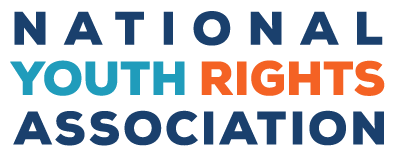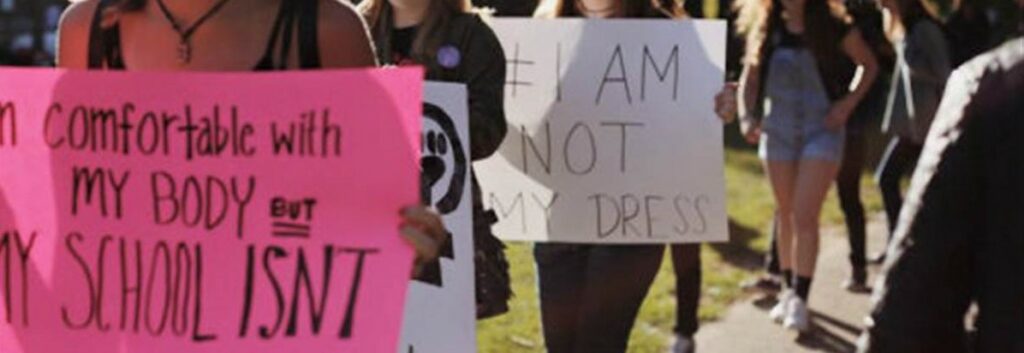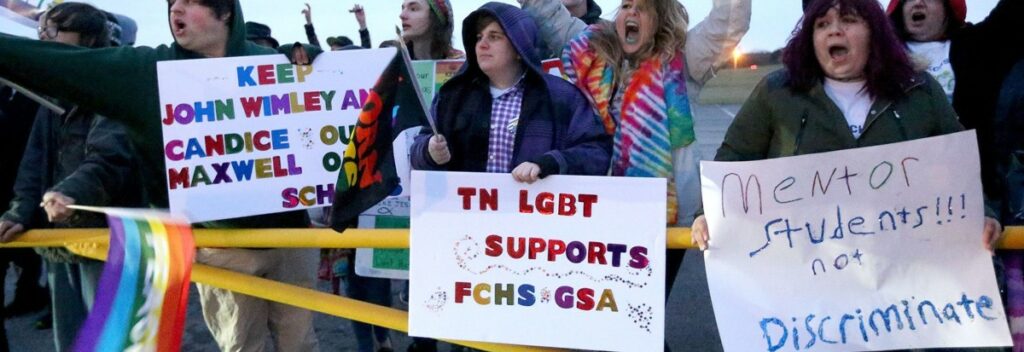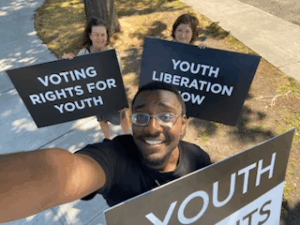We believe the right to be free from government censorship applies to everyone regardless of age. However, school administrators have frequently tried to censor student speech in a variety of ways: banning clothing with certain messages, removing articles from school newspapers, preventing students from passing out materials at school, turning off the microphone when students are giving a speech, or punishing students for writing material online. In many of these instances, students have successfully brought their school to court over violation of their First Amendment rights and won.
The right to free speech
The most famous case for establishing the idea that young people’s First Amendment rights are protected while they are in school was Tinker v. Des Moines (U.S. Supreme Court, 1969). In 1965, students John & Mary Beth Tinker and Christopher Eckhardt were threatened with suspension for wearing armbands to protest the Vietnam War. Their case ended up at the U.S. Supreme Court who, in a 7-2 decision, sided with the students and concluded that the schools failed “to show that its action [punishing the students] was caused by something more than a mere desire to avoid the discomfort and unpleasantness that always accompany an unpopular viewpoint.”

The Court also set a precedent for other cases involving student rights by concluding that “it can hardly be argued that either students or teachers shed their constitutional rights to freedom of speech or expression at the schoolhouse gate,” and that “in our system, state-operated schools may not be enclaves of totalitarianism. School officials do not possess absolute authority over their students. Students in school, as well as out of school, are ‘persons’ under our Constitution. They are possessed of fundamental rights which the State must respect.” While many courts have followed what became known as “the Tinker Standard” since then, other courts have ruled in ways that chip away at the protections those students fought for.
Controlling What Students Wear
People of any age use clothing as a way to make statements about political or personal beliefs or show an interest in music or sports. It is therefore no surprise that many of the free speech cases in schools revolve around what students are allowed to wear.
Statements made on clothes (or buttons, jewelry, etc.) are considered forms of speech and are mostly protected by the First Amendment. Schools cannot ban a particular shirt, just because they don’t agree with the statement or because they feel it may disrupt learning. Despite this, schools have punished students from wearing everything from shirts criticizing the President to supporting rival sports teams. In most of these cases, the school has violated the constitutional rights of students.
However, it is not against the law for schools to make general rules about the type of clothing (no written words, no shorts, uniforms) if they apply to everyone equally. Unfortunately, rules about dress codes and uniforms, because they apply to all students, have been supported by the courts.
Off-campus speech
Students have been punished for a variety of statements they’ve made online, ranging from calling out teachers for sexually harassing students or for criticizing their school in other ways. Schools may be concerned about students who have used the internet to intimidate others, but they often take extreme measures to punish students or abused their authority in demanding students to give up their passwords to their social media accounts. The courts are unclear whether the schools can punish students for speech made online, even when that speech is about the school or other students. In some of these cases, the courts have upheld the students’ rights to free speech and in others they have sided with the schools, which makes it difficult to determine a definitive rule, but NYRA believes that the school doesn’t have the right to censor you.
School Newspapers and the Hazelwood Standard
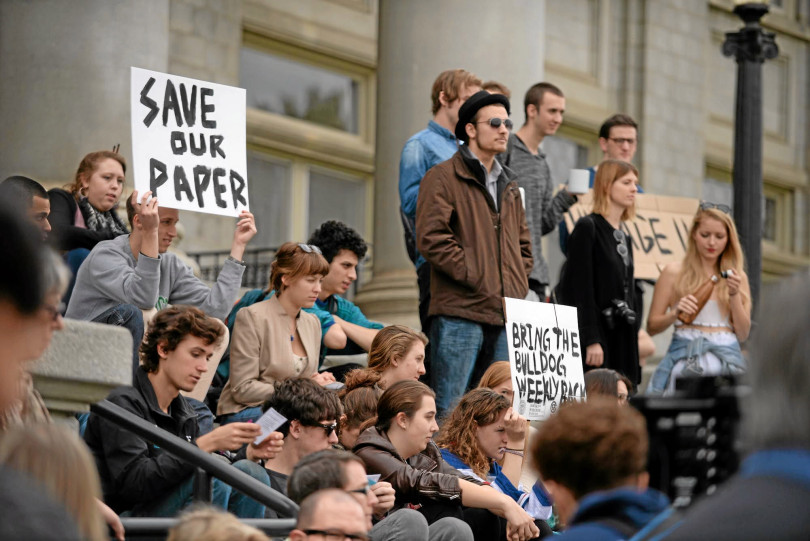
If you are writing for your school newspaper, the rules for whether the school can censor your work is largely governed by the court case of Hazelwood School District v. Kuhlmeier (U.S. Supreme Court, 1988). In this case, students at Hazelwood East High School attempted to publish two articles dealing with teen pregnancy and the effects of divorce on children in an issue of their school newspaper. However, the principal believed these articles were inappropriate and decided to withhold them from publication. Three students brought the case to court, alleging a violation of their First Amendment rights. In a 5-3 decision, the U.S. Supreme Court decided that the principal’s actions did not violate the students’ First Amendment rights because schools are able to set certain standards for student speech that is published and disseminated under their sponsorship. The Court declared that schools have the right to censor speech that is “inconsistent with ‘the shared values of a civilized social order,’” and that exercising editorial control over student speech in school newspapers was justified as long as it related to educational concerns. The Court further asserted that schools may censor “publications, theatrical performances, or other expressive activities” that bear on the public image of the school or relate to legitimate educational concerns as long as the activities “are supervised by faculty members and designed to impart particular knowledge or skills to student participants and audiences.”
In this way, the Hazelwood case set different rules for speech that bears the name of the school. The Tinker Standard requires school officials to show that their censorship is based on a reasonable expectation that the content would cause a material and substantial disruption of school activities or an invasion of the rights of others. The Hazelwood Standard, on the other hand, only requires that school officials show that they have a valid educational purpose for their censorship and that the censorship is not intended to silence a particular viewpoint that they just disagree with or that isn’t popular.
However, in order for a school to censor student work under the guidelines set by Hazelwood, four criteria have to be met:
- The material must be part of the school curriculum or sponsored by the school. This is usually indicated if the school has lent its name and resources to the publication, if the school created it, if it is supervised by a faculty member, or if it was designed specifically to share information with a student audience.
- The material cannot be part of a public forum. A public forum is created when school officials have “by policy or practice” allowed students unrestricted use of a publication. This is often indicated where students editors have final authority over the content of the publication.
- The censorship must have a valid educational purpose. Even where the school has control over a curriculum-based newspaper in a non-public forum, it can only censor material for limited reasons. Reasons can include material that is “ungrammatical, poorly written, inadequately researched, biased or prejudiced, vulgar or profane, or unsuitable for immature audiences;” the inclusion of sensitive topics; and material advocating undesirable behavior or associating the school with a certain position on politically controversial issues. Schools still may not engage in “viewpoint discrimination” by forbidding or punishing only certain disfavored opinions.
- The state cannot have passed specific “anti-Hazelwood” laws. Some states have adopted “anti-Hazelwood” laws. which means that the school has to prove that the published material would cause a “material and substantial disruption” to the school. As of 2017, states with anti-Hazelwood laws include Arkansas, California, Colorado, Illinois, Iowa, Kansas, Maryland, Massachusetts, North Dakota, Oregon, and Pennsylvania.
These guidelines can also be applied to other school-sponsored material such as yearbooks, literary magazines, radio and TV programs, and graduation speeches.
What you can do
Remember:
- Get Anti-Hazelwood laws passed in your state. Many states have laws that protect student publications from censorship.
- Start Your Own Paper. Hazelwood restrictions cover official school papers, but schools are unable to censor blogs or papers you publish on your own.
